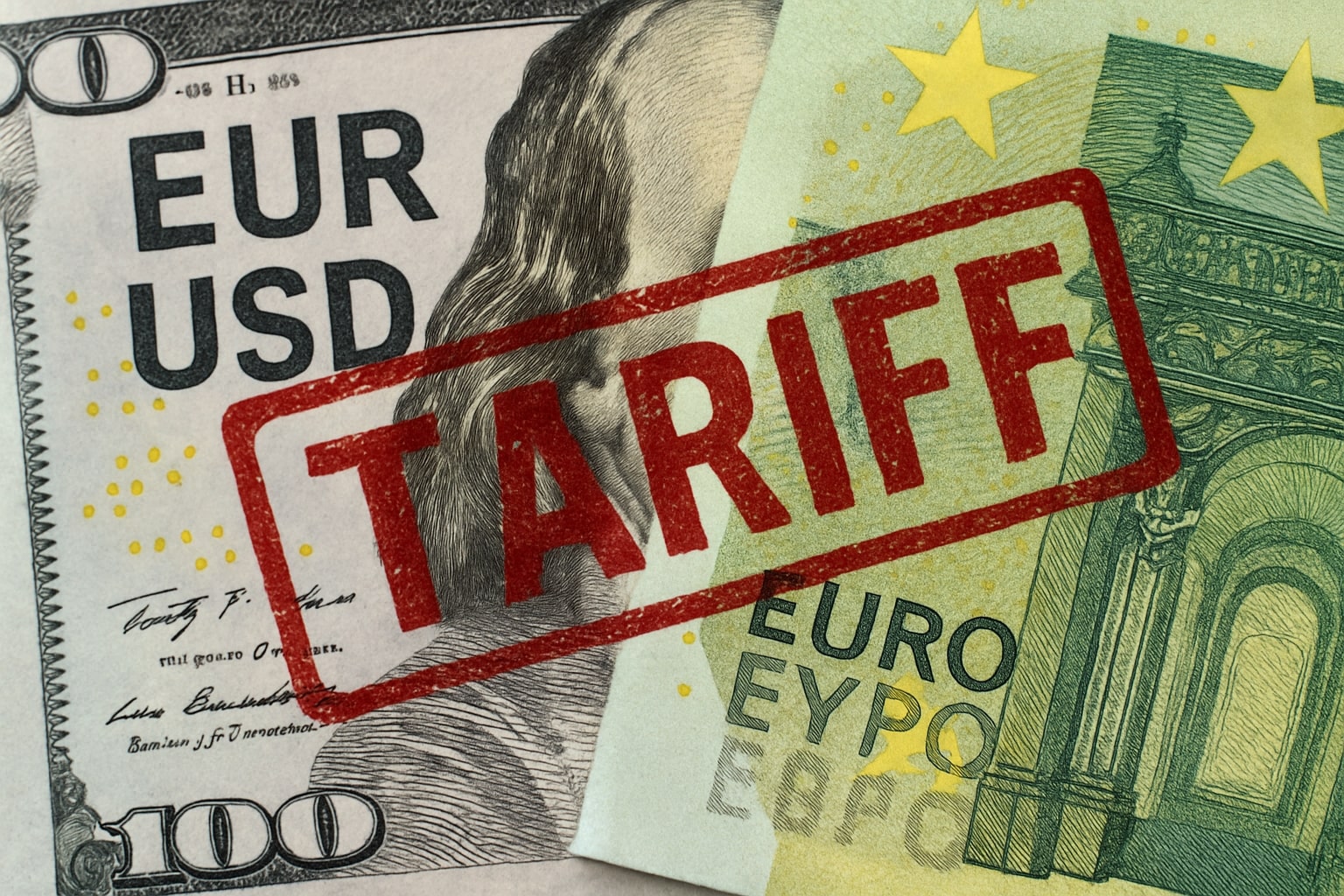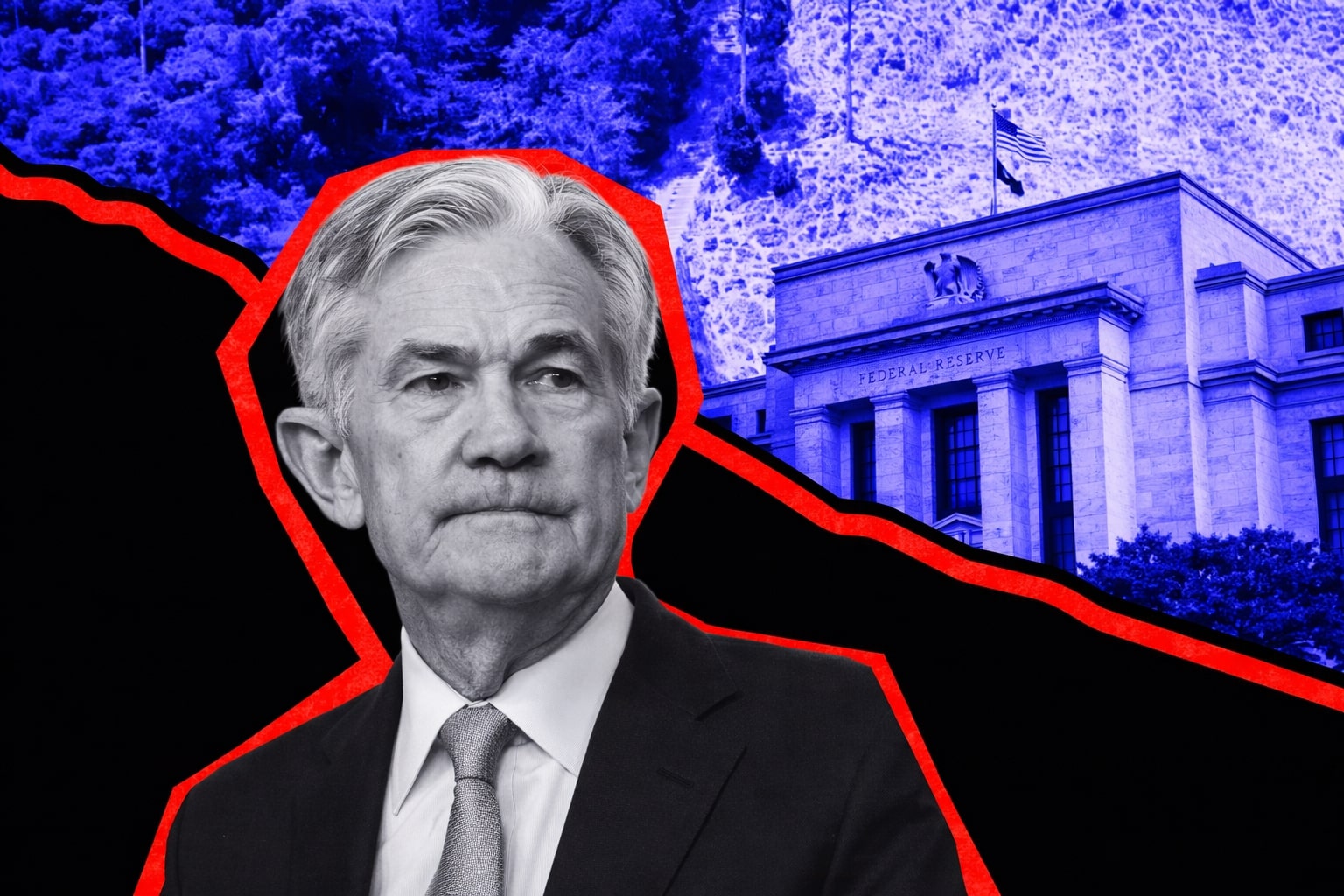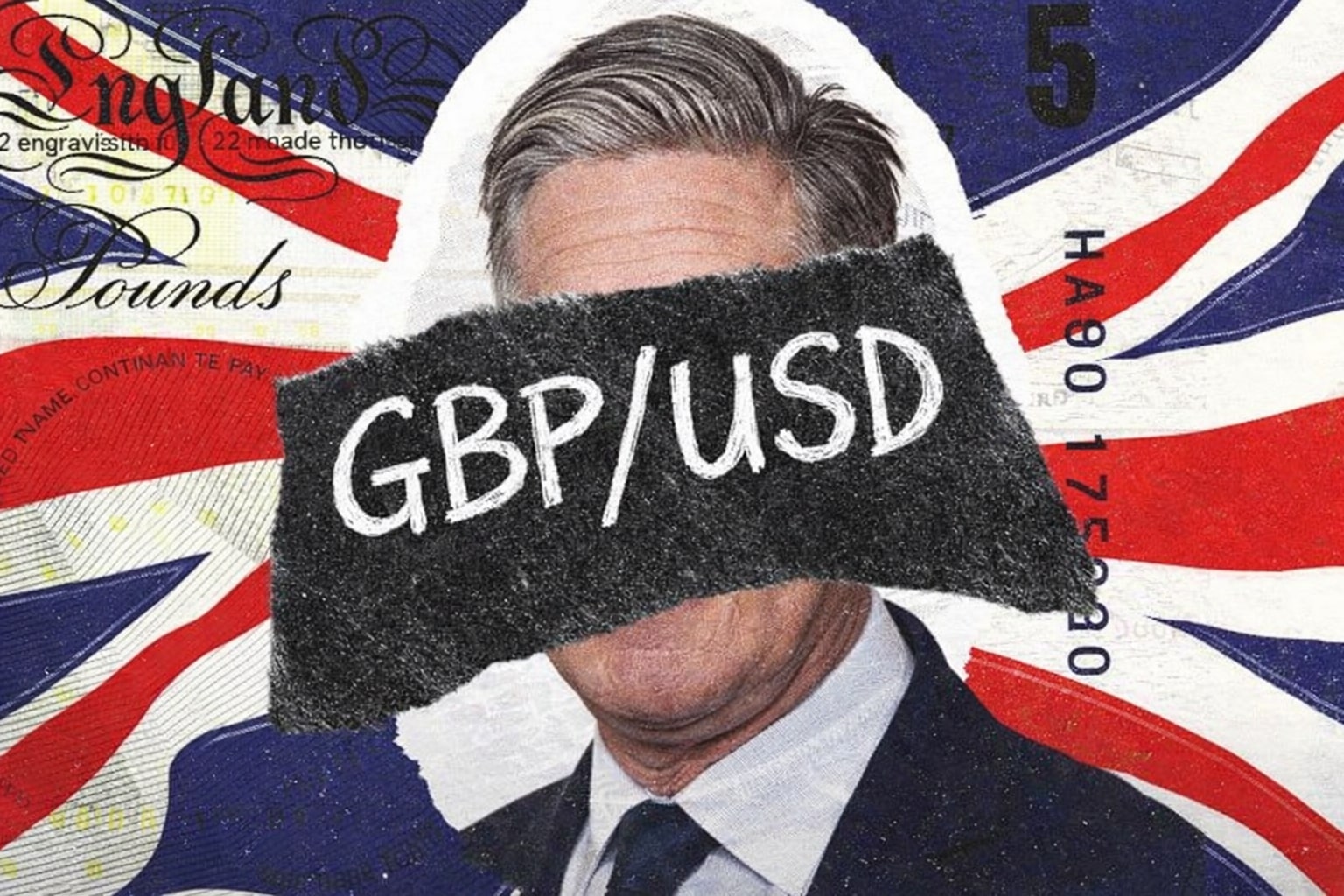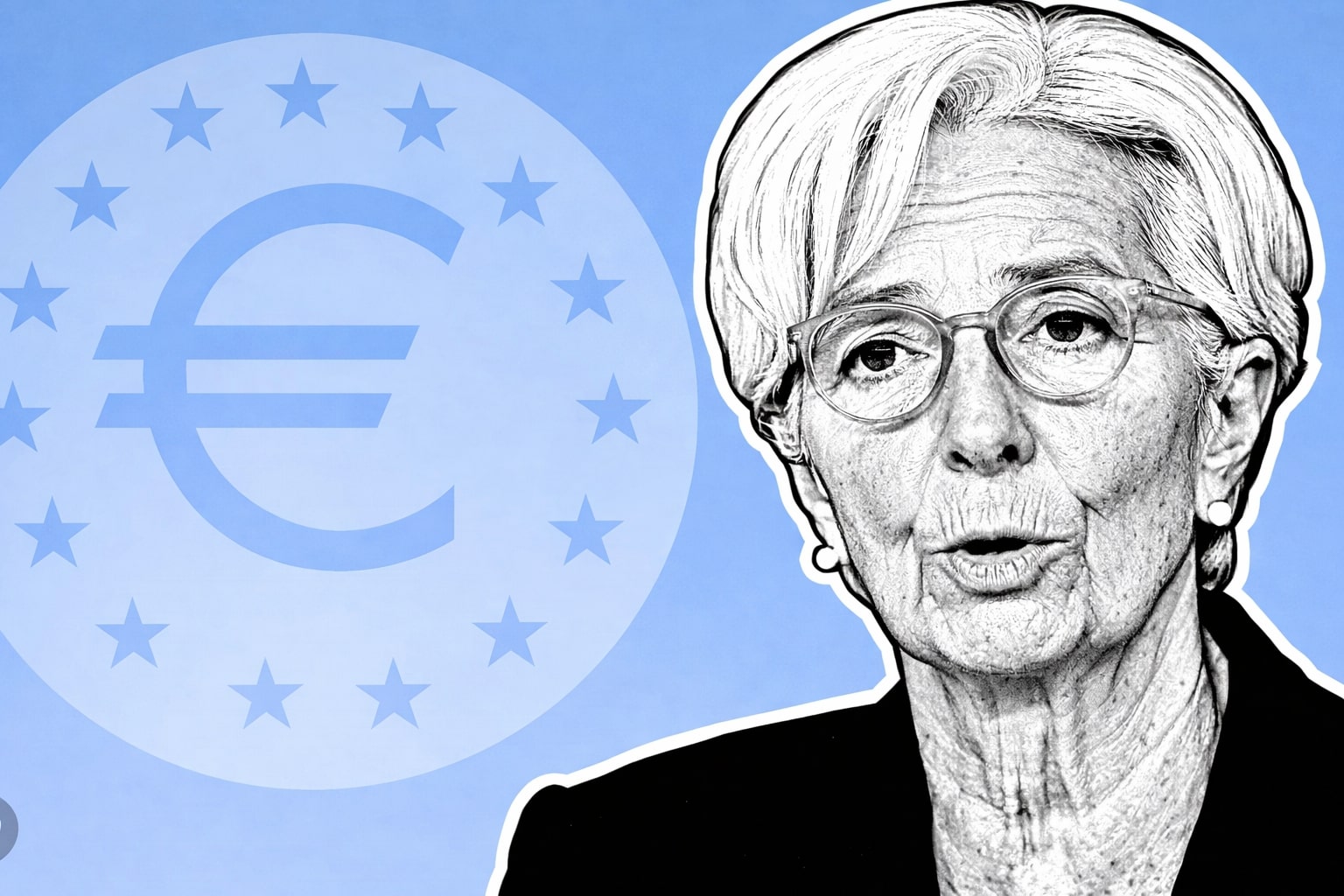
EUR/USD Cracks Under Tariff Pressure and CPI Risk, Eyes 1.1500 Breakdown
Euro sinks below 1.1700 as Trump’s tariff blitz, U.S. CPI shock, and ECB inertia combine to threaten multi-month lows | That's TradingNEWS
EUR/USD Faces Intensifying Bearish Pressures as Tariff Risks and Divergent Central Bank Policies Dominate
Euro Under Siege as Trump’s Tariff Barrage Triggers Capital Flight into USD
The EUR/USD pair continues to absorb the shock of President Trump’s rapidly expanding trade offensive, with tariffs now reaching 30% on imports from the European Union, effective August 1st. Simultaneous threats of 15–20% tariffs on twenty other trading partners and a staggering 35% levy on Canadian goods have driven extreme volatility across FX markets. At the same time, safe-haven bids lifted the US Dollar Index (DXY) to 97.85, within striking distance of the critical 98.00 resistance, tightening the noose on EUR/USD bulls. The pair traded around 1.1670 during early Monday, holding within a narrowing symmetrical triangle pattern between $1.1710 (50 EMA) and $1.1676 (200 EMA). A break below 1.1665 could signal a new wave of downside targeting 1.1625, 1.1590, and the key 1.1500 level.
ECB Policy Uncertainty Fuels Pressure as U.S. CPI Looms
Markets are bracing for the June U.S. CPI print, projected at +0.3% MoM, which could derail hopes for a July Fed rate cut—currently priced at just 6.7%. Schnabel of the ECB’s Governing Council reaffirmed that the central bank will not intervene to suppress the Euro, noting that the current appreciation reflects stronger investor confidence. However, this policy stance could backfire as inflation in the Eurozone remains well below target. The ECB forecasts HICP inflation at only 1.6% for 2026, and pressure is building for rate adjustments. Schnabel’s opposition to further cuts creates friction inside the ECB, particularly as Germany increases borrowing for infrastructure and defense. The neutral ECB rate is now seen much higher than past cycles, suggesting diminishing monetary flexibility.
Technical Levels Suggest EUR/USD Breakdown if Key Supports Breach
From a structural standpoint, EUR/USD is coiling for a decisive move. The pair is boxed within the 1.1668–1.1650 support zone and faces stiff resistance at 1.1705–1.1765. A loss of the June 24 low of 1.1573 would expose 1.1454 (June 23 low) and 1.1400 psychological support. On the flip side, a rally above the July 1 high of 1.1830 could allow upside toward 1.1900 and 1.2000, though this scenario appears increasingly unlikely given prevailing macro forces. The 14-day RSI trending between 40–60 indicates a lack of bullish momentum, while the MACD turns lower on the daily chart.
European Equities Slide Further, Dragging EUR with Them
European stock indices have mirrored the Euro’s weakness. The STOXX 50 closed down 1.1% at 5,380, while the broader STOXX 600 also shed 1.1% to finish at 547, reflecting mounting tariff fears. Sectors most exposed to transatlantic trade—luxury (LVMH, Kering, Stellantis) and banking (UniCredit, BBVA, Nordea)—suffered the steepest losses, falling between 2%–4%. Despite this, the STOXX 50 still managed a 1.7% gain on the week, underscoring just how much headline risk has increased in the past 72 hours. The Trump administration’s formal letters to the EU have now confirmed that tariffs are not mere threats—but imminent policy, which may compel the ECB to shift rhetoric despite its current reluctance.
Trade Deal Hopes Keep Bulls Tentatively Engaged
Chancellor Merz of Germany continues to voice optimism that a trade compromise may be reached by late July. His statement helped EUR/USD recover from its 1.1676 low back toward 1.1700, albeit temporarily. Markets are reluctant to fully price in a resolution, given the August 1 tariff deadline and no concrete signs of de-escalation. However, any real progress—such as a public EU–US framework agreement—could rapidly reverse EUR/USD’s trajectory. For now, the pair’s bias remains decisively tilted to the downside unless diplomatic breakthroughs materialize.
Fed Caution vs ECB Hawkish Posture Creates Policy Divergence
While U.S. Fed officials remain cautious, acknowledging strong labor data and sticky inflation, the 10-year Treasury yield holds near 4.36%, supporting the dollar. By contrast, the ECB’s resistance to easing measures may reinforce the Euro’s real yield, but not its nominal value, especially if trade damage accelerates. If the ECB cuts rates to preempt economic damage, the Euro could fall below the 1.15 threshold—possibly testing the 1.1400–1.1450 zone.
Verdict: Bearish on EUR/USD — Sell Rallies Below 1.1760
With tariff escalation, ECB policy paralysis, and U.S. economic resilience converging, EUR/USD remains under pressure. Price action below 1.1700 validates a bearish structure, with near-term targets at 1.1620, 1.1570, and 1.1500. If CPI data surprises to the upside and EU–US talks stall, the pair could spiral toward 1.1400. The bias is Bearish, and rallies into 1.1720–1.1760 are likely sell opportunities unless there’s a major trade breakthrough. Stops should be placed above 1.1780. As things stand, EUR/USD is a Sell.
That's TradingNEWS
Read More
-
UCO ETF Price Forecast: Can NYSEARCA:UCO at $18.57 Ride a 2026 Oil Squeeze?
18.12.2025 · TradingNEWS ArchiveStocks
-
XRPI at $10.50 and XRPR at $14.93 Hit XRP ETF Lows While XRP-USD Holds $1.84 After 30 Days of Inflows
18.12.2025 · TradingNEWS ArchiveCrypto
-
Natural Gas Price Forecast: Henry Hub Holds Around $4 as EIA Draw Hits 167 Bcf
18.12.2025 · TradingNEWS ArchiveCommodities
-
USD/JPY Price Forecast: Pair Holds Above 155 As BoJ And US CPI Set Up A Major Break
18.12.2025 · TradingNEWS ArchiveForex



















